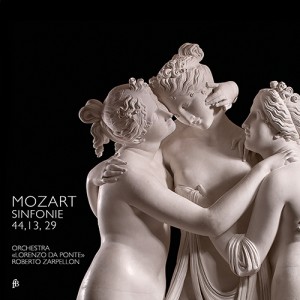Mozart and Canova
Wolfgang Amadeus Mozart’s life was full of journeys, more than that of any other composer of his time: three Italian tours within two years. He discovered the Serenissima and its surroundings during his first Italian tour, arriving in Venice (a place Mozart considered the most dangerous in all Italy) in 1769, having travelled through Verona, Vicenza and Padua on Leopold’s advice. The second tour, undertaken in 1771, took him to Milan in order to supervise a production of «Ascanio in Alba», a serenade Mozart had written for the marriage of Maria Theresia’s son, the Archduke Ferdinand von Habsburg, to Maria Beatrice von Este. Many months of work were invested in the Mozart family’s (sadly thwarted) intention thereby to secure the composer a firm engagement at court. The last Italian journey in 1772 took Mozart once more to Milan, this time for performances of «Lucio Silla» and although the composer never visited the country again, Mozart fully exploited his «lectio italiana». The resulting style, the spirit, the paramount importance of melody and phrasing – comparable to the influence on G. F. Handel of a four-year sojourn in the «Belpaese» – are all elements having a permanent influence on Mozart’s writing.
The sculptor Antonio Canova was born in 1757 …

Wolfgang Amadeus Mozart (1756 – 1791)
Sinfonia «Italiana» Nr. 44 in D, KV 81
Sinfonia «Italiana» Nr. 13 in F, KV 112
Sinfonia Nr. 29 in A, KV 201
Ensemble «Lorenzo da Ponte»
Roberto Zarpellon conductor
fb 1404328
EAN code 4260307433284


